2008.08.13 17:48
has the sun finally set on oma?
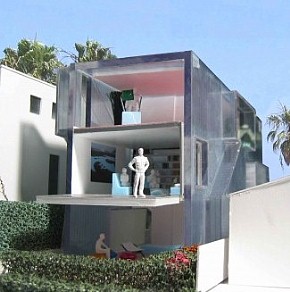
OMA's take on domestic flexiblilty, 2005.
2008.08.15 08:36
has the sun finally set on oma?
The sun will finally set on OMA/AMO if Koolhaas becomes risk-averse.
How many other architects actually seek out the risk? It is indeed Koolhaas' continual seeking-out-the-risk that sets Koolhaas as an architectural designer apart. The "envelop" really doesn't get pushed without taking a risk, and Koolhaas knows that full well.
Apropos, I cannot think of a riskier work of architecture than CCTV.
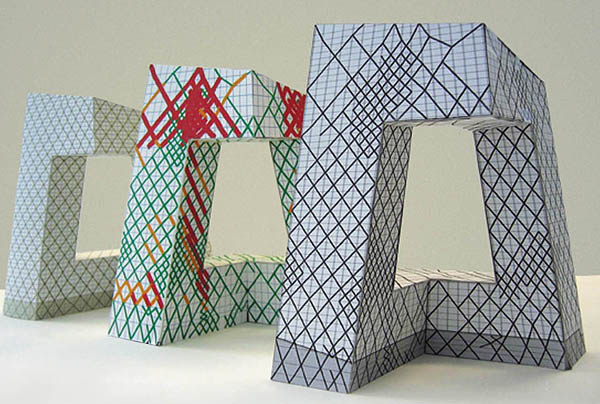
risk : 1. exposure to the chance of injury or loss; a hazard or dangerous chance
| |
2008.08.15 10:33
has the sun finally set on oma?
The Guggenheim Las Vegas was a risk in a town that is all about risk. Apropos again, contextual even.
2008.08.23 15:16
Peter's canon
One thing that crossed my mind last night was how, when I see the many study models of H&dM...
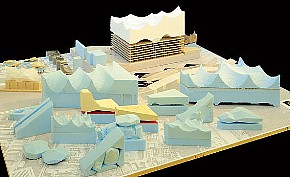
...and OMA...
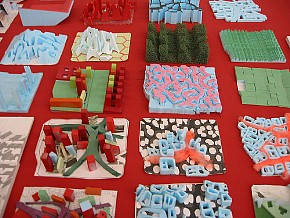
...I'm reminded of the many study models produced by Gehry for the Lewis Residence...
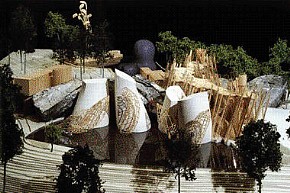
(I may be stretching it, but...)
Gehry's method of design via innumerable study models seems to have become quite influential.
| |
2008.09.18 16:32
H & deM in TriBeCa: 56 Leonard
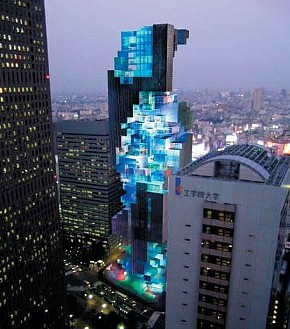
OMA, Idea Vertical Campus, Tokyo, Japan, 2004
2008.10.14 20:35
Learning from Las Vegas (ad infinitum): An Interview With Charlie Kaufman
"If you extrapolate [the] current situation and current trends and the way architecture is evolving, it's maybe slightly too strong to say that ultimately everything will be embedded in a casino."
--Rem Koolhaas on The Charlie Rose Show March 25, 2002 42 minutes into the show.
2008.12.03 00:44
where is the good new architecture?
Is there really all that much difference between 31 December 1999 and 1 January 2000? They're arbitrary place setters, and not the demarcation of disticnt different times. Metaphorically, the calendar is the cart, not the horse.
Personally, I see the Seattle Library design going back to Kahn's [and Tyng's] mid-1950s Municipal Building designs for Philadelphia. Historical analysis within a space-time continuum is more ongoing productivity and less end-product.
2009.01.13
Piranesi/Construction of Merveilles
from Roberto Gargiani, Rem Koolhaas/OMA: The Construction of Merveilles (2008):
p. 106-7: The Study of the areas potential was based on the method applied for the IJ-plein, inserting different urban fabrics, from the primitive villages favored by Van Eyck to Pompeii and the Campus Martius of Piranesi, taken as a chaotic form of the Culture of Congestion.
p. 217: While fragments of Piranesi's plan of the Campus Martius glued onto the plans of his projects are used by Koolhaas to allude to the chaotic density of edification typical of the Culture of Congestion, the Nolli plan is used as an example of the public urban space obtained by excavating a private edified block. In the interpretation of the poché--called into play not directly but through the example of the Nolli plan--there is a sculptural accentuation foreign to the idea of poché of Kahn and Venturi, and closed to the idea developed by Rowe and Krier. Koolhaas did not directly discuss the term poché and its sculptural implications until the end of the 1990s.
p. 219: These Blocks alternate with voids, known as "joints", "in-between domain", continuous event space, and set aside for cafes, restaurants, video, reading, performances, temporary exhibitions. The activities for the "joints" are another expression of the Culture of Congestion, for which the formal model of the Campus Martius of Piranesi is presented as an example.
p. 231: "All Generic Cities come from a tabula rasa: if there was nothing, now they are there; if there was something, they have replaced it. They must be so, otherwise they would have a historical character." The Campus Martius of Piranesi, the "continuous plane" of No-Stop City, the Supersurface and the "city-archipelago" are behind this form of the Generic City, which is without urban fabric, just as in the visions of Piranesi, Archizoom, Superstudio and Ungers.
p. 239: The Hyperbuilding includes more Bigness and reflects a size not covered by S,M,L,XL, somewhere between Large and Extra Large, between Bigness and the Generic City. It is a mass of 5 million square meters for 120,000 inhabitants, taking on the configuration of a visionary skyscraper-city, like the projects of Constant, of Metabolism, or those of Hood for Manhattan (in the working drawings, the Rome of Piranesi makes a telling appearance).
p. 313: For the ground area around the CCTV and the TVCC--the Media Park--OMA experimented with reproductions of historic plans, a technique the group has often applied in the development phase. The lines of the old plan of Rome drawn by Piranesi were transformed into pixels with a diameter of 120 centimeters to create an archaeological park (each circle could be an architectural, botanical or urban furnishings element).
|